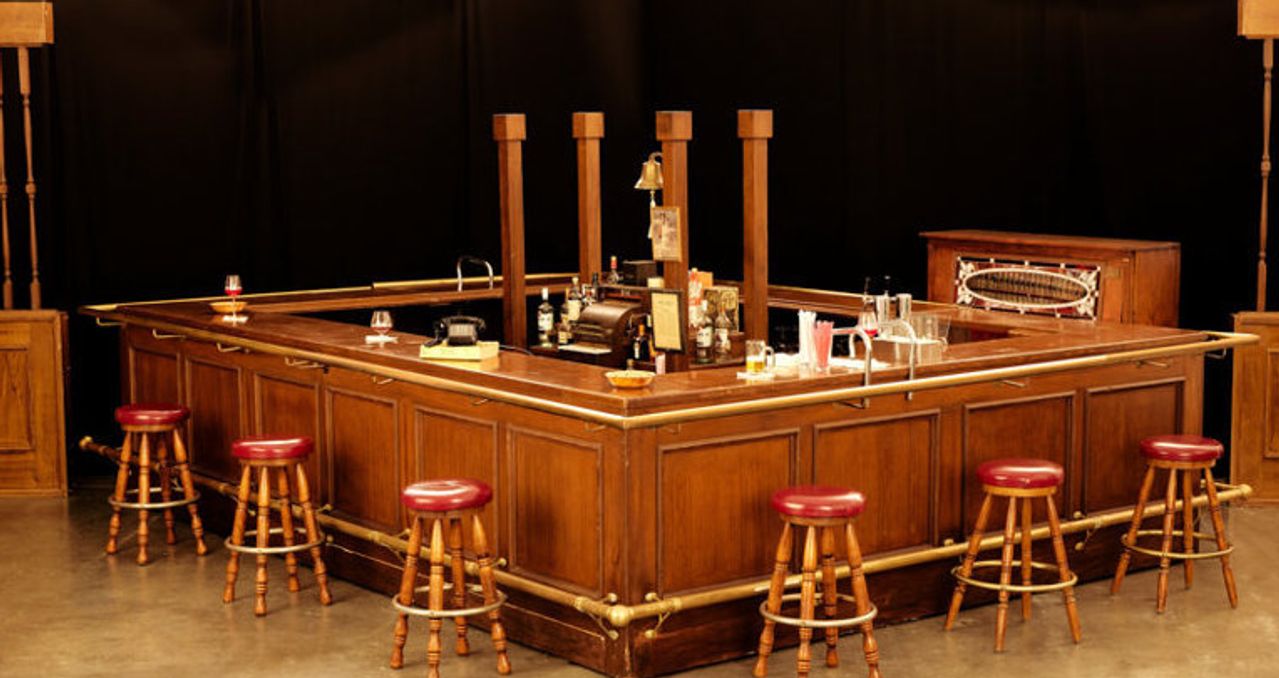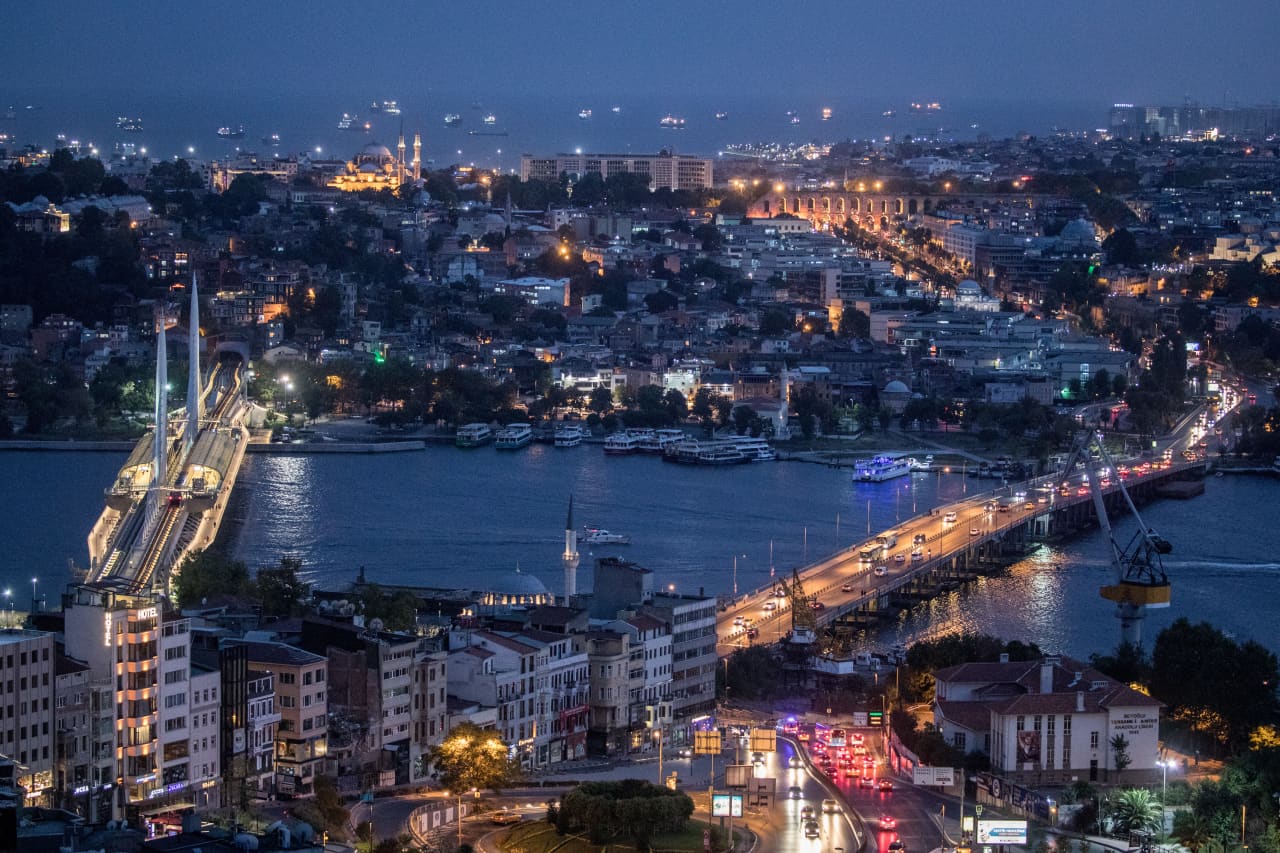Kirstie Alley Scratchiti and All—Bar From Set of ‘Cheers’ Fetches $675,000 at Auction
Sam, Coach, Norm, Cliff, Woody…everyone knows the names of the cast of Cheers, the 1980s NBC sitcom set in a Boston bar.
The set of that iconic pub sold for US$675,000 on Saturday night in Dallas, the culmination of a three-day sale helmed by Heritage Auctions.
Complete with brass hardware and the bar stools—as well as “engravings” on the bar’s surface by cast members like John Ratzenberger (Cliff) and Kirstie Alley (Rebecca), according to a video made with Ratzenberger and George Wendt (Norm) in advance of the auction—the set of the classic comedy was one of a collection of nearly 1,000 props, costumes, and sets from some of television’s most beloved shows.
More: Holy ‘Grails’ of NFT Art Are up for Sale, and Collectors Are Clamouring for Them
The collection—amassed over more than three decades by James Comisar, an art market specialist focused on television artifacts—realized US$5.35 million, according to Heritage. More than 4,700 bidders participated, but Heritage declined to identify any of the buyers. Comisar conserved and preserved the items with plans to open a museum, but it never came to fruition.
“The auction’s success confirmed what I have always known: that television characters are cherished members of our extended family and that their stories and our own are inseparable,” Comisar said in a statement. “These pieces have finally been afforded the cultural significance they deserve.”

Other highlights of the auction included the Batman and Robin costumes worn by Adam West and Burt Ward from the 1960s series of Batman, which were sold for US$615,000 on the first day of bidding; the set Johnny Carson used on NBC’s Tonight Show, complete with the desk, couch, and backdrop painting of downtown Burbank, Calif., realized US$275,000; and Archie and Edith Bunker’s chairs from both All in the Family and Archie Bunker’s Place fetched US$250,000.
There were also items from M*A*S*H, Gilligan’s Island, and Star Trek V: The Final Frontier.
“We knew from the moment we began working with James last year that this auction would be extraordinary, and thanks to Heritage’s client-collectors we were not wrong,” Joshua Benesh, chief strategy officer at Heritage, said in a statement. “These are amazing items with amazing stories.”
 Copyright 2020, Dow Jones & Company, Inc. All Rights Reserved Worldwide. LEARN MORE
Copyright 2020, Dow Jones & Company, Inc. All Rights Reserved Worldwide. LEARN MORE
This stylish family home combines a classic palette and finishes with a flexible floorplan
Just 55 minutes from Sydney, make this your creative getaway located in the majestic Hawkesbury region.
Continued stagflation and cost of living pressures are causing couples to think twice about starting a family, new data has revealed, with long term impacts expected
Australia is in the midst of a ‘baby recession’ with preliminary estimates showing the number of births in 2023 fell by more than four percent to the lowest level since 2006, according to KPMG. The consultancy firm says this reflects the impact of cost-of-living pressures on the feasibility of younger Australians starting a family.
KPMG estimates that 289,100 babies were born in 2023. This compares to 300,684 babies in 2022 and 309,996 in 2021, according to the Australian Bureau of Statistics (ABS). KPMG urban economist Terry Rawnsley said weak economic growth often leads to a reduced number of births. In 2023, ABS data shows gross domestic product (GDP) fell to 1.5 percent. Despite the population growing by 2.5 percent in 2023, GDP on a per capita basis went into negative territory, down one percent over the 12 months.
“Birth rates provide insight into long-term population growth as well as the current confidence of Australian families,” said Mr Rawnsley. “We haven’t seen such a sharp drop in births in Australia since the period of economic stagflation in the 1970s, which coincided with the initial widespread adoption of the contraceptive pill.”
Mr Rawnsley said many Australian couples delayed starting a family while the pandemic played out in 2020. The number of births fell from 305,832 in 2019 to 294,369 in 2020. Then in 2021, strong employment and vast amounts of stimulus money, along with high household savings due to lockdowns, gave couples better financial means to have a baby. This led to a rebound in births.
However, the re-opening of the global economy in 2022 led to soaring inflation. By the start of 2023, the Australian consumer price index (CPI) had risen to its highest level since 1990 at 7.8 percent per annum. By that stage, the Reserve Bank had already commenced an aggressive rate-hiking strategy to fight inflation and had raised the cash rate every month between May and December 2022.
Five more rate hikes during 2023 put further pressure on couples with mortgages and put the brakes on family formation. “This combination of the pandemic and rapid economic changes explains the spike and subsequent sharp decline in birth rates we have observed over the past four years,” Mr Rawnsley said.
The impact of high costs of living on couples’ decision to have a baby is highlighted in births data for the capital cities. KPMG estimates there were 60,860 births in Sydney in 2023, down 8.6 percent from 2019. There were 56,270 births in Melbourne, down 7.3 percent. In Perth, there were 25,020 births, down 6 percent, while in Brisbane there were 30,250 births, down 4.3 percent. Canberra was the only capital city where there was no fall in the number of births in 2023 compared to 2019.
“CPI growth in Canberra has been slightly subdued compared to that in other major cities, and the economic outlook has remained strong,” Mr Rawnsley said. “This means families have not been hurting as much as those in other capital cities, and in turn, we’ve seen a stabilisation of births in the ACT.”
This stylish family home combines a classic palette and finishes with a flexible floorplan
Just 55 minutes from Sydney, make this your creative getaway located in the majestic Hawkesbury region.






















